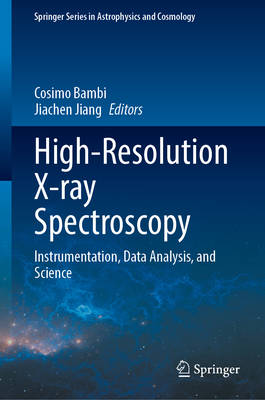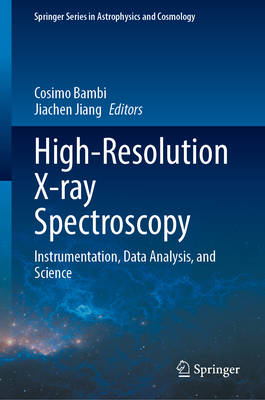
Door een staking bij bpost kan je online bestelling op dit moment iets langer onderweg zijn dan voorzien. Dringend iets nodig? Onze winkels ontvangen jou met open armen!
- Afhalen na 1 uur in een winkel met voorraad
- Gratis thuislevering in België vanaf € 30
- Ruim aanbod met 7 miljoen producten
Door een staking bij bpost kan je online bestelling op dit moment iets langer onderweg zijn dan voorzien. Dringend iets nodig? Onze winkels ontvangen jou met open armen!
- Afhalen na 1 uur in een winkel met voorraad
- Gratis thuislevering in België vanaf € 30
- Ruim aanbod met 7 miljoen producten
Zoeken
High-Resolution X-Ray Spectroscopy
Instrumentation, Data Analysis, and Science
€ 214,95
+ 429 punten
Omschrijving
NASA's Chandra X-ray Observatory and ESA's XMM-Newton Observatory have been the pioneering satellites for studying the Universe with X-rays and the cornerstone of X-ray spectroscopy since their launches more than 20 years ago. The onboard gratings provide us a unique opportunity to distinguish individual spectral lines from different atoms thanks to their high energy resolutions. Enormous discoveries have been achieved by these two missions when observing a variety of X-ray-emitting astronomical objects, such as black holes, supernova remnants, clusters of galaxies, and stars. However, the data are limited to fairly bright X-ray sources. The recent JAXA's mission Hitomi opened a new window of high-resolution X-ray spectroscopy thanks to its onboard X-ray calorimeter. Although this mission was shortly terminated due to a mishap, Hitomi left behind a few sets of observations awaiting more data mining. The first half of this book introduces the history of high-resolution X-ray spectroscopy and different generations of X-ray spectrometers. A tutorial guide on how to reduce, analyze, and understand the astronomical data from Chandra, XMM-Newton, and Hitomi is also included. The second half of the book reviews past results obtained by the high-resolution spectrometers on these missions on multiple topics and discusses possible discoveries by upcoming missions in the next decade.
Specificaties
Betrokkenen
- Uitgeverij:
Inhoud
- Aantal bladzijden:
- 425
- Taal:
- Engels
- Reeks:
Eigenschappen
- Productcode (EAN):
- 9789819944088
- Verschijningsdatum:
- 2/09/2023
- Uitvoering:
- Hardcover
- Formaat:
- Genaaid
- Afmetingen:
- 160 mm x 238 mm
- Gewicht:
- 884 g

Alleen bij Standaard Boekhandel
+ 429 punten op je klantenkaart van Standaard Boekhandel
Beoordelingen
We publiceren alleen reviews die voldoen aan de voorwaarden voor reviews. Bekijk onze voorwaarden voor reviews.










